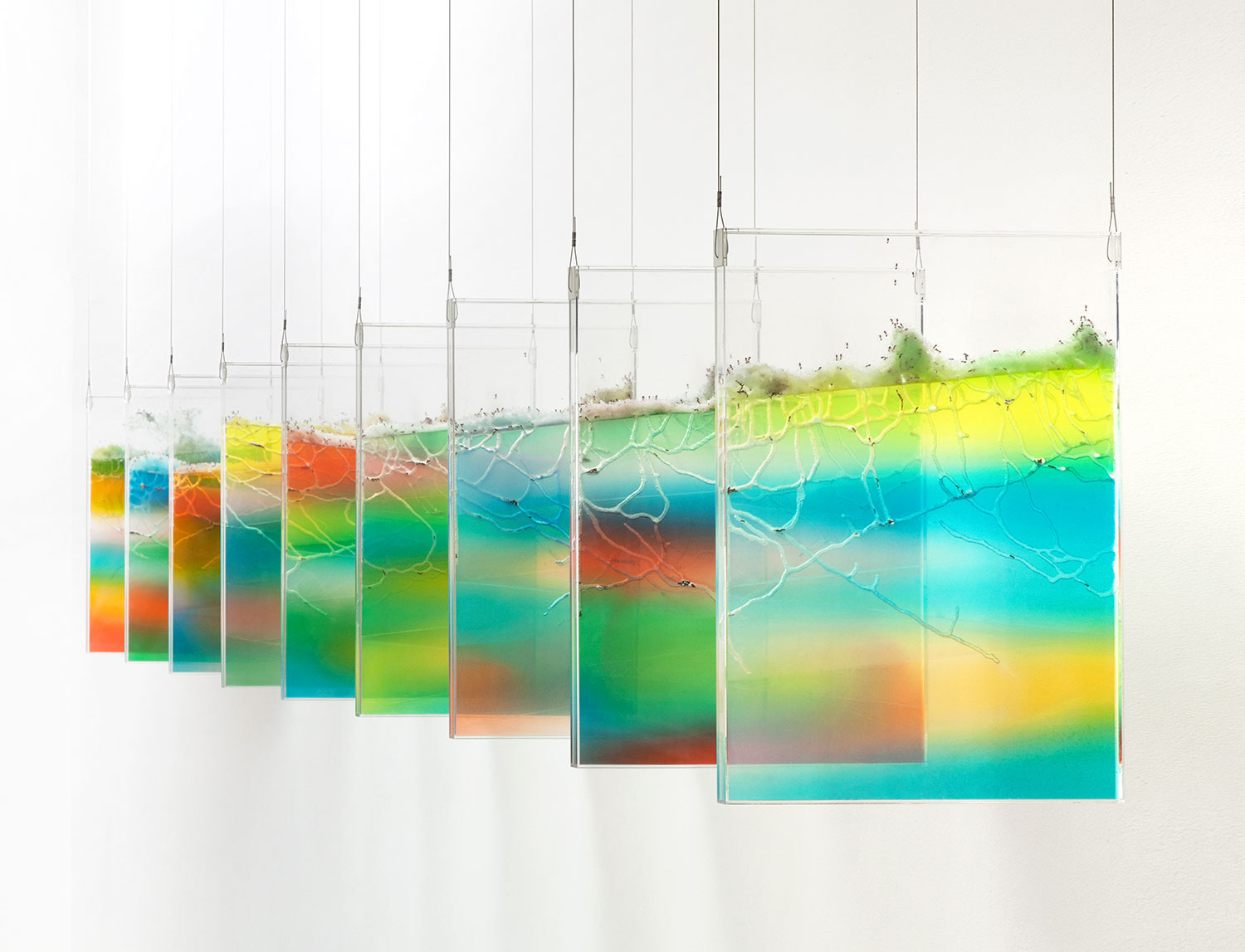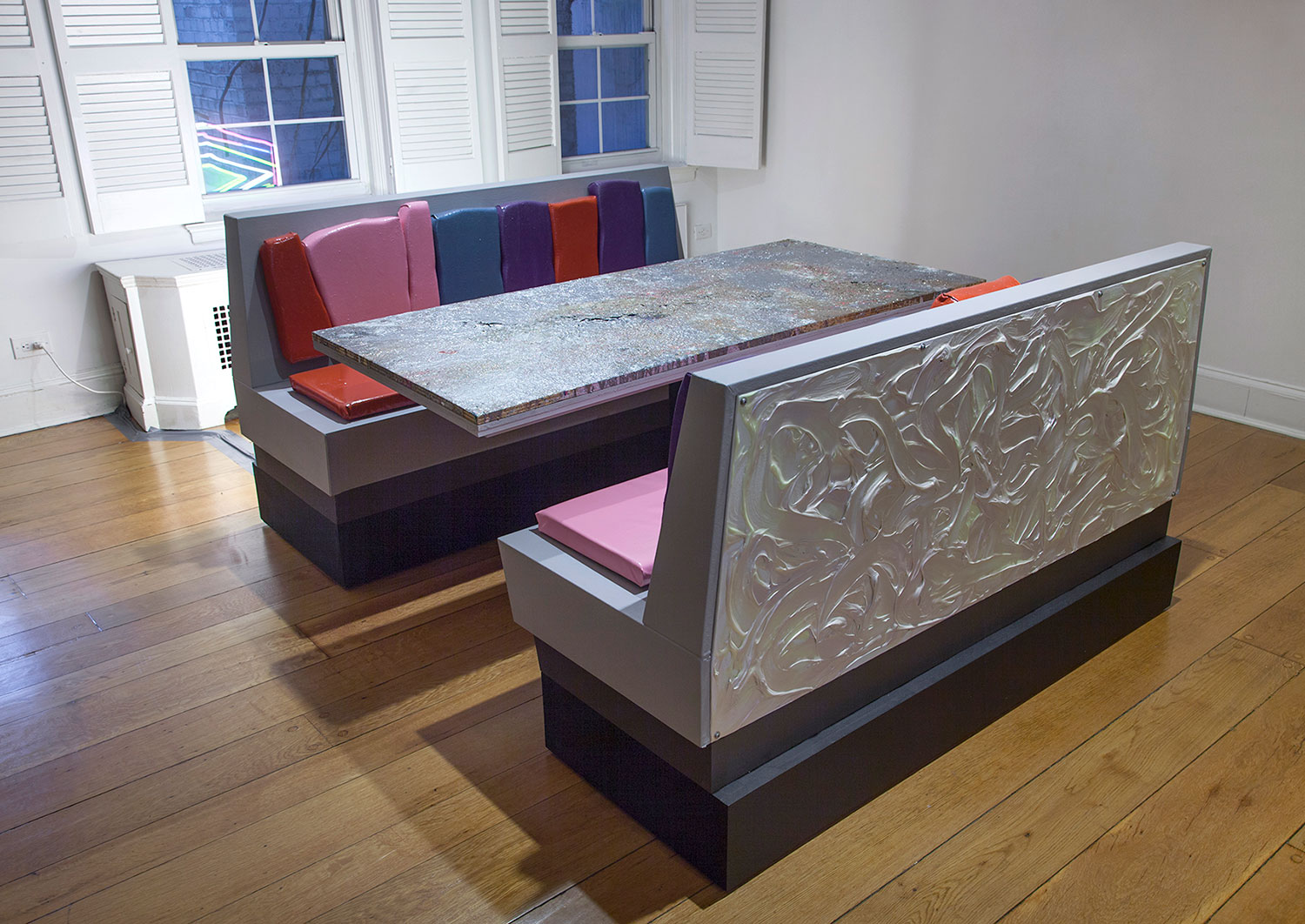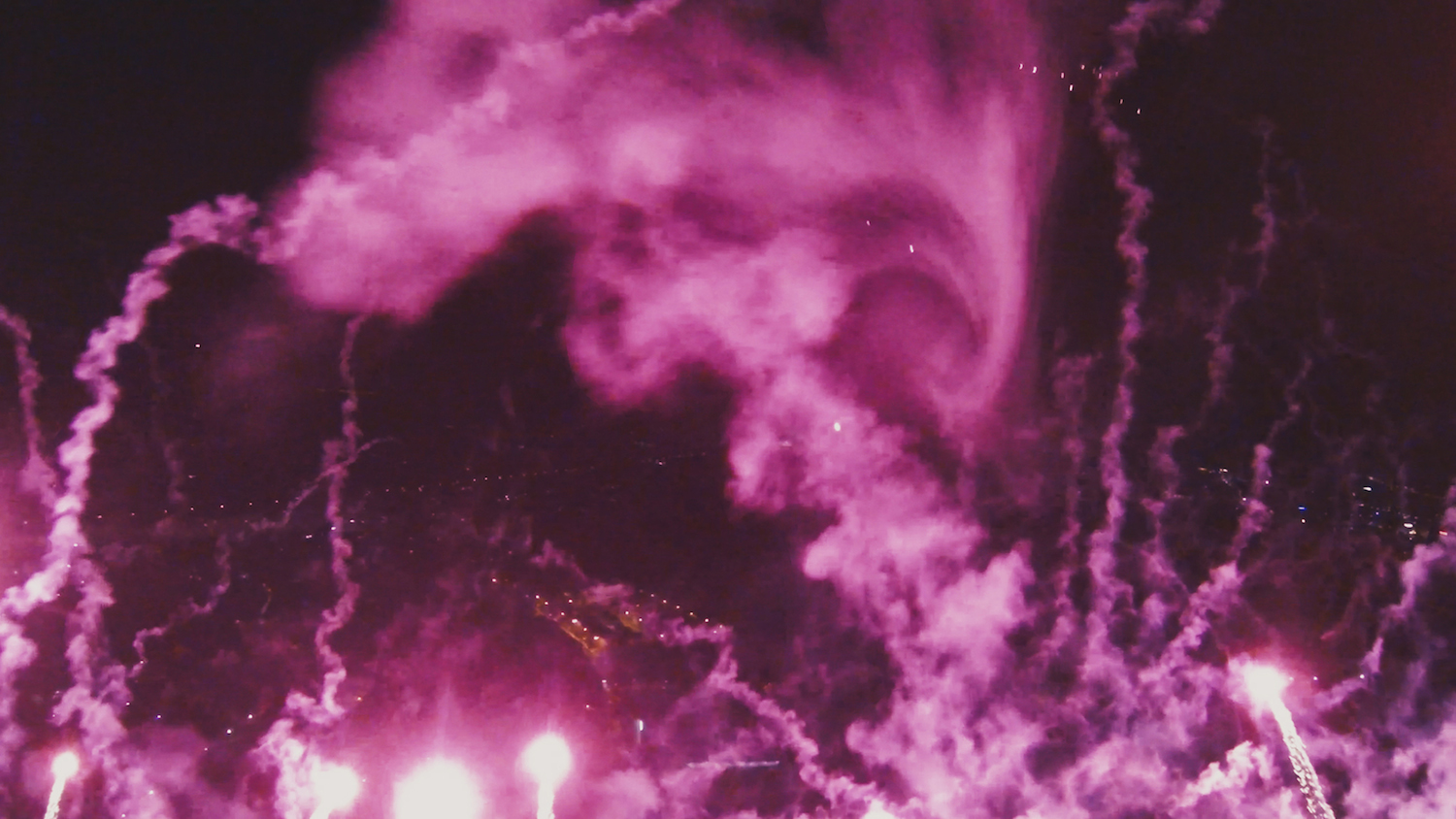With their layers of scrubby brushstrokes, washes of color, and lively squiggles, the work of Henning Strassburger pulses with seeming chaos. “It’s not actually expressive; it’s very calculated,” says the Berlin-based artist, a 2009 graduate of Kunstakademie Düsseldorf (where he studied with Albert Oehlen). His “strategic” approach pays off, in constellations of skillfully suspended elements: controlled explosions masquerading as spontaneous combustion. Strassburger recently made time to discuss his anti-process process, the joy of printing paintings, and why Pierre Bonnard is not to be underestimated. Henning Strassburger: Fünf Bilder at Robert Blumenthal Gallery marks the artist’s first solo show in New York.
Stephanie Murg: When you’re starting a painting, are you looking at source material? Where do you begin?
Henning Strassburger: My way of painting is strategic. I try to have my tools ready, so I know what I can use. Last year, I challenged myself not to use certain techniques, just to see what would happen. For example, working without a grid in the painting or without spray paint. Sometimes I limit myself to a point where I have to find a solution in terms of color only. This is how I try to work. I’m not a process-based painter, so it’s never about what happens before.
SM: So you’re not a “process” painter, yet there are many steps and processes at play in your work. And usually these techniques are not readily apparent, as with works that you create using digital images of paintings. What role does reproduction play in your work?
HS: I recently had a show in Moscow [at Osnova Gallery], and half of the paintings were printed. I took some smaller paintings and works on paper, and we scanned and printed them as large as the original paintings. I want to have a quality of surface that relates to other images in my paintings. So it can happen that one painting is printed and another is painted, but I don’t want this to add something to the work.

SM: How do you decide when a work is finished?
HS: I think it’s like being the singer in a band. If the band stops, you don’t keep singing. It’s the same thing with painting. The painting tells you pretty clearly when it’s ready. There’s a certain quality, which could be the content, the painted quality — it changes from painting to painting — and if a painting has it, it’s able to survive.
SM: “Air Conditioner” was the title of your Moscow exhibition, and this term also appeared in the titles of paintings shown at Blumenthal Gallery in New York. Where does that come from?
HS: I had a studio in New York, and it was so hot I was dying, so I started drawing air conditioners. In the New York show, there were smaller paintings based on those drawings. In the Moscow show, the printed paintings were the drawings I did in New York, so one thing led to another. And I just liked the strange idea of air conditioners — this system that hides behind the wall, that connects the rooms to each other and also to other apartments. It’s a weird thing, an air conditioner.
SM: I never thought about the fact that air conditioners are often invisible.
HS: Now that I think about it, I should tell you that my whole family is in the air conditioner business! My father and my two uncles are all in the cooling industry. I never thought about this before, but that’s probably where it comes from.
SM: Bonnard has also popped up in the titles of your work. What do you think of Bonnard?
HS: I’m a huge Bonnard fan. When you’re at a museum and there’s a huge Matisse and a tiny Bonnard, everybody just takes pictures of the Matisse and looks past the Bonnard. But I think the angles he chose for his paintings, and the way he cut figures was way ahead of his time — beautiful, ugly, muddy.

SM: “Beautiful,” “ugly,” and “muddy” all feel relevant to your work as well. Just when I think I see glimmers of antecedents — the work of Oehlen or of Julie Mehretu, for example — I think twice, especially in light of how you play with digital culture. Are there other artists that you find yourself especially drawn to?
HS: The only consistent one is Bonnard. I recently discovered later works by Roy Lichtenstein that are much more painterly, almost like a de Kooning. I liked Lichtenstein as a teenager because everybody did, but now I see that he’s better than I thought.
SM: You’ve described what you create as “a painting that’s not a painting.” What do you mean by that?
HS: You see lots of paint drips in my work, but they never happen by accident. I drip onto cardboard, which then drips onto the painting, so it’s composed dripping. The drips have no visible source. It’s not actually expressive; it’s very calculated.
SM: What are you working on now?
HS: I’m working on a fall exhibition with Blain|Southern. It’s based around works on paper, so I have some series going on in the studio. I wanted to go back to the “Pool” paintings that I did in 2014. I thought it would be fun to see what happened if I started that series again, after a four-year break. It’s a good challenge.




